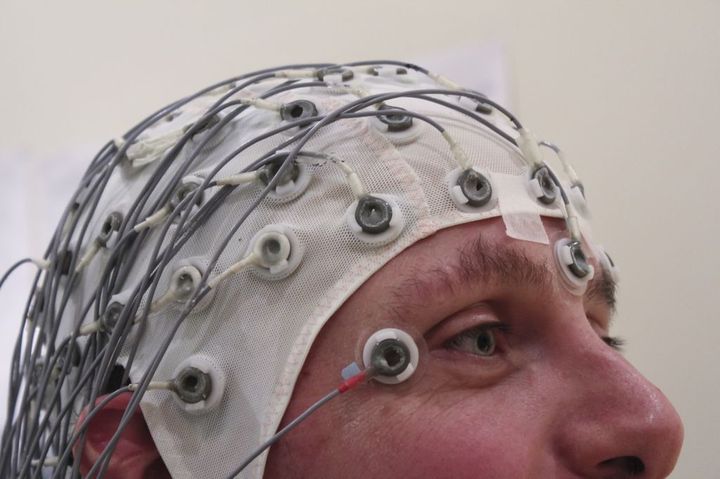
While we like to think of humans as pretty smart, our communication can be limited at times. Think of the moments you said something sarcastically and the other person didn't pick up on the sarcasm. Or you asked someone in the same household to do a routine chore, and somehow the instructions got messed up between what you said and what the other person heard. While we need to get better at communication in our everyday lives to improve things for the people around us, scientists are also working on a bit of a shortcut -- brain-to-brain communication.
That's right. Just as cool as telepathy, what they're proposing is your thoughts are sent directly to the other person. It's preliminary, it's a bit shaky, but what it could do in the future is quickly illuminate what we want to say without the need of words. Imagine the applications for communicating with someone of a different language, for example, or speaking to younger children who may not understand words as much as gestures.
Let's talk first about a meeting of the minds with rats. Here's the official scientific description of what happened, according to the 2013 Scientific Reports paper led by Duke University's Miguel Pais-Vieira: "An 'encoder' rat performed sensorimotor tasks that required it to select from two choices of tactile or visual stimuli. While the encoder rat performed the task, samples of its cortical activity were transmitted to matching cortical areas of a 'decoder' rat using intracortical microstimulation (ICMS). The decoder rat learned to make similar behavioral selections, guided solely by the information provided by the encoder rat's brain.
Let's break down what that actually means. According to io9, one rat in Brazil pressed a lever in a cage to get a reward. Through a brain implant, an electrical signal was sent all the way to another rat in North Carolina. The second rat had no idea that the lever would give it a reward, but once it learned it from the first rat, it pressed the lever and got the same result. This only worked two-thirds of the time, but it's a good start.
"But an intercontinental mind-meld represents something new: a brain-to-brain interface between two live rats — one that enables realtime sharing of sensorimotor information. It's a scientific first, and while it's not telepathy, per se, it's certainly something close. Neither rat was necessarily aware of the other's existence, for example, but it's clear that their minds were, in fact, communicating," io9's Robbie Gonzalez wrote.
To go even a step further, humans have communicated with rats through this brain interface. Talk about interspecies coolness! The technology used is called focused ultrasound (FUS), according to CNET. At high intensities, it can vaporized damaged tissue, but at lower power it seems to just stimulate the tissue instead. To get the human and rat talking to each other, the human is connected to an EEG and the rat to an FUS. As the human views circles flashing, the computer system linking the person to the rat causes the rat to twitch its tail, by going to the region of the rat's brain that controls this. Read more scientific details in this 2013 PLOS One article, led by Harvard University's Seung-Schik Yoo.

Turns out computers can help humans do the rudiments of communication with rats. Credit: Wikimedia Commons
But what about human communication, a sort of artificial Vulcan mind-meld? That has also been achieved using a similar kind of brain stimulation. According to ExtremeTech, in one study one person was connected to an EEG and the other connected to something called a transcranial magnetic stimulation (TMS) device, which uses magnetism to stimulate parts of the brain (instead of the ultrasound used in the previous study).
The sender imagined moving his or her hands or feet, which was encoded into binary language. You know, the 0s and 1s that computers understand. Feet was translated as a 0, and hands as a 1. Once the "0" or "1" arrived at the receiver, it went to a part of the brain's visual cortex that produces light flashes. If the person saw no flash, they interpreted it as a 0. If they saw a flash, it was a 1. Read more details in this 2014 PLOS One article led by Starlab Barcelona's Carles Grau.
This isn't the only example, either. Another University of Washington study had one person actually move the hand of another using the same EEG/TMS type of connection. A separate EEG setup (also led by Grau) had one person think of the words "hola" or "ciao" which were transmitted successfully between France and India. Talk about mind-reading.
The results are relatively simple right now, but think about the implications. Maybe one day it'll be easier to talk through an EEG machine than send an e-mail. And if you really want your dog to sit, perhaps the first step will be to turn to a computer rather than a trainer. Where do you think this technology will lead us?
Top image: Wikimedia Commons








